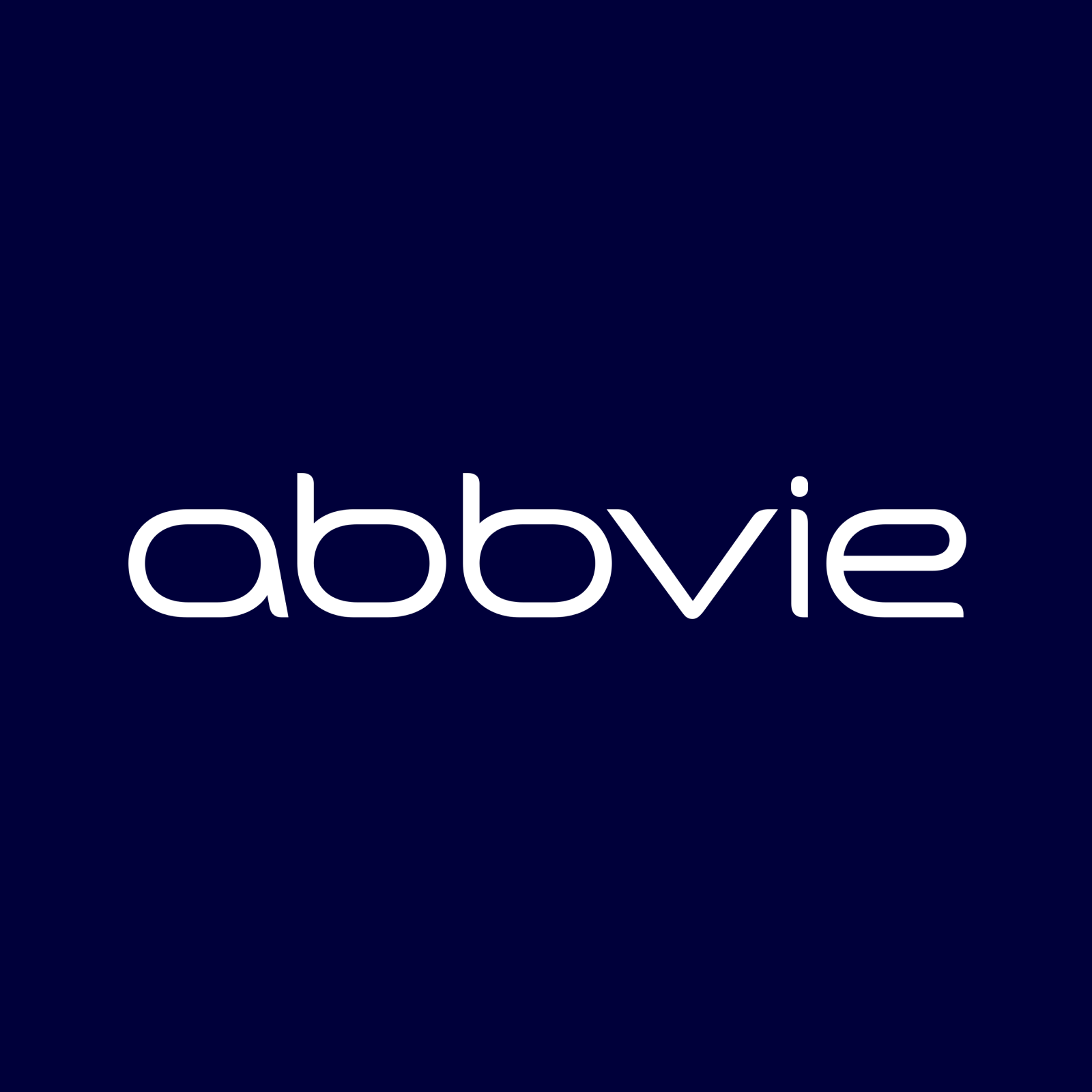
CBIZ Inc
NYSE:CBZ


| US |

|
Johnson & Johnson
NYSE:JNJ
|
Pharmaceuticals
|
| US |

|
Mastercard Inc
NYSE:MA
|
Technology
|
| US |

|
Abbvie Inc
NYSE:ABBV
|
Biotechnology
|
| US |

|
Hormel Foods Corp
NYSE:HRL
|
Food Products
|
| US |

|
Philip Morris International Inc
NYSE:PM
|
Tobacco
|
| CN |

|
Alibaba Group Holding Ltd
NYSE:BABA
|
Retail
|
| US |

|
Procter & Gamble Co
NYSE:PG
|
Consumer products
|
| US |

|
Walt Disney Co
NYSE:DIS
|
Media
|
| US |

|
Booking Holdings Inc
NASDAQ:BKNG
|
Hotels, Restaurants & Leisure
|
| US |

|
Intel Corp
NASDAQ:INTC
|
Semiconductors
|
| US |

|
Match Group Inc
NASDAQ:MTCH
|
Media
|
| US |

|
Apple Inc
NASDAQ:AAPL
|
Technology
|
| US |

|
NVIDIA Corp
NASDAQ:NVDA
|
Semiconductors
|
| US |

|
Alphabet Inc
NASDAQ:GOOGL
|
Media
|
| US |

|
Meta Platforms Inc
NASDAQ:META
|
Media
|
| US |

|
Advanced Micro Devices Inc
NASDAQ:AMD
|
Semiconductors
|
Utilize notes to systematically review your investment decisions. By reflecting on past outcomes, you can discern effective strategies and identify those that underperformed. This continuous feedback loop enables you to adapt and refine your approach, optimizing for future success.
Each note serves as a learning point, offering insights into your decision-making processes. Over time, you'll accumulate a personalized database of knowledge, enhancing your ability to make informed decisions quickly and effectively.
With a comprehensive record of your investment history at your fingertips, you can compare current opportunities against past experiences. This not only bolsters your confidence but also ensures that each decision is grounded in a well-documented rationale.
Do you really want to delete this note?
This action cannot be undone.

| 52 Week Range |
57.24
86.02
|
| Price Target |
|
We'll email you a reminder when the closing price reaches USD.
Choose the stock you wish to monitor with a price alert.

|
Johnson & Johnson
NYSE:JNJ
|
US |

|
Mastercard Inc
NYSE:MA
|
US |

|
Abbvie Inc
NYSE:ABBV
|
US |

|
Hormel Foods Corp
NYSE:HRL
|
US |

|
Philip Morris International Inc
NYSE:PM
|
US |

|
Alibaba Group Holding Ltd
NYSE:BABA
|
CN |

|
Procter & Gamble Co
NYSE:PG
|
US |

|
Walt Disney Co
NYSE:DIS
|
US |

|
Booking Holdings Inc
NASDAQ:BKNG
|
US |

|
Intel Corp
NASDAQ:INTC
|
US |

|
Match Group Inc
NASDAQ:MTCH
|
US |

|
Apple Inc
NASDAQ:AAPL
|
US |

|
NVIDIA Corp
NASDAQ:NVDA
|
US |

|
Alphabet Inc
NASDAQ:GOOGL
|
US |

|
Meta Platforms Inc
NASDAQ:META
|
US |

|
Advanced Micro Devices Inc
NASDAQ:AMD
|
US |
This alert will be permanently deleted.
 CBIZ Inc
CBIZ Inc






 You don't have any saved screeners yet
You don't have any saved screeners yet

Good morning, and welcome to the CBIZ Fourth Quarter 2019 Results Conference Call. [Operator Instructions] Please note, this event is being recorded.
I would now like to turn the conference over to Lori Novickis, Director of Investor Relations. Lori, please go ahead.
Good morning, everyone, and thank you for joining us for the CBIZ Fourth Quarter and Full Year 2019 Results Conference Call. In connection with this call, today's press release has been posted on the Investor Relations page of our website, www.cbiz.com. This call is being webcast. A link to the live webcast as well as the replay can also be found on our website.
Before we begin our presentation, we would like to remind you that during the call, management may discuss certain non-GAAP financial measures. A reconciliation of these measures can be found in the financial tables of today's press release.
Finally, remember that management may also make forward-looking statements. Such statements are based on current information and management's expectations as of this date and do not guarantee future performance. Forward-looking statements involve certain risks, uncertainties and assumptions that can be difficult to predict. Actual results can and sometimes do differ materially. A more detailed description of such risks and uncertainties can be found in the Company's filings with the Securities and Exchange Commission.
Joining us for today's call are Jerry Grisko, President and CEO; and Ware Grove, Chief Financial Officer.
I will now turn the call over to Jerry for his opening remarks. Jerry?
Thank you, Lori, and good morning, everyone. With this morning's release of fourth quarter and full year results for 2019, we were pleased to report that earnings per share from continuing operations increased by 16.5% for the full year. That being $1.27 for 2019 compared with $1.09 for the prior year.
We also reported 110 basis point improvement in our profit margin and income before tax and total revenue growth of 2.9%. While fourth quarter revenue growth of 2.1% was lower than full year growth, it's important to remember that revenue growth in the third quarter, reported at 6.9%, was much stronger.
As we advised at the end of the third quarter, certain project-related work that could have occurred at any time in the second half of the year was completed in the third quarter. And as a result, we expected revenue in the fourth quarter to be somewhat softer. As we've commented many times in the past, revenue in the second half of any year for us is far more dependent on project-oriented work, which, by its very nature, is difficult to predict. So internally, one of the trends that we consider is the rate of growth in the second half of a given year compared to the first half of that same year.
In 2019, for the third and fourth quarters combined, second half revenue grew by 4.6% compared with first half revenue growth of 1.4%. This first half versus second half revenue growth dynamic was driven by several factors.
To start, first half revenue in our Financial Services group was negatively impacted by delays encountered in connection with tax reform. This was largely caught up during the third quarter and was reflected in the stronger revenue growth at that time.
And second, as expected, continued investments in our Benefits and Insurance businesses are continuing to gain momentum, resulting in second half growth from that group being considerably higher than first half growth.
Our reported same unit revenue numbers for the fourth quarter were impacted by the same issues. Fourth quarter same unit revenue growth was 0.1% and full year same unit revenue was up 2%. Our second half same unit revenue growth of 3% was considerably higher than our first half growth of 1.2% for the reasons I outlined earlier.
Adding to our existing operations, we were pleased to announce the closing of 6 acquisitions throughout 2019. These newly acquired operations will contribute approximately $17.4 million to our annualized revenue. To date, this year in 2020, we've already closed an additional three acquisitions effective February 1, totaling approximately $6.2 million of annualized revenue.
As in the past, we have a long list of potential acquisition candidates that are at various stages of the process, including a number that is somewhat larger than the typical transactions that we've completed in recent years. While it's too early to predict if and when those transactions may close, we have the resources, processes, capacity and desire to increase the number of transactions that we add each year and, if the right opportunities present themselves, the size of those transactions as well.
Turning to our Financial Services group. Total revenue for the fourth quarter grew by 0.7%, and same unit revenue declined by 0.3%. For the full year, total revenue grew by 2.6%, with same unit revenue up 2.5%. While our core accounting and tax business continues to be very strong and is performing to our expectations, the rate of revenue growth within this group was reduced by lower growth from a number of our national consulting practices, including our government health care consulting business and our private equity consulting business.
As we commented in the third quarter, revenue growth within our government health care consulting business has historically been in the high single-digit range, but was lower than expected in 2019 due to administrative delays encountered with several large contracts. Those contracts have either been signed or we expect them to be signed shortly, and for the work to commence sometime in the first quarter, after which, the rate of growth for this business should return to historic levels.
Since its formation in 2017, our private equity business has experienced very strong rates of growth. As we also commented at the end of the third quarter, we experienced some softness in demand from one of the primary service offerings within this group, and revenue for the full year of 2019 was essentially flat.
During the fourth quarter, we saw demand strengthen and this business now has a stronger pipeline of projects as a result. Going into 2020, we expect to achieve stronger revenue growth from this business than we experienced a year ago.
Despite some softness in revenue within our government health care consulting and our private equity services businesses, the leadership teams within those businesses did an outstanding job of managing costs, and we're able to achieve target profit margins.
Turning to our Benefits and Insurance group. Revenue for the fourth quarter grew by 3.8%, while same unit revenue declined by 0.2%. For the year, total revenue grew by 2.7% with same unit growth for the full year at 0.1%. This business continues to generate very strong profit margins, and we're continuing to make investments to accelerate top line growth. It's important to note that second half same unit revenue growth improved considerably, with revenue growth of 2.8% in the second half of 2019 compared to a revenue decline of 2.4% in the first half of the year.
The investments in new producers within our Benefits and Insurance group is a multiyear effort, and we continue to be strategic and intentional in order to attract, train and develop new producers to be successful. Our results are encouraging, especially given that the performance of the new producers as a group is outpacing our expectations in regards to production. Likewise, we spent much of the past year focused on improving our stewardship efforts to increase client retention rates, and those efforts appear to be paying off.
Looking ahead, in 2020, we're continuing to build capabilities and actively manage the investment in new producers. There are a number of factors in place, but the first half versus second half growth rates I outlined for the Benefits and Insurance group is consistent with the results that we're seeing with this new producer investment.
Within our payroll business, 2019 was a transitional year as we introduced a new comprehensive human capital management platform. This platform allows us to serve larger, more sophisticated clients with more complex needs, while our legacy platform allows us to continue to meet the needs of our small and midsized clients.
The launch of the new platform was delayed for a few months early in 2019, which put us behind schedule for the year. But since introducing this new product to the market, response from clients and prospects has been very positive and the size of revenue pipeline for this new product offering is very encouraging.
To recap, we are very pleased with the full year earnings results recorded for 2019. Demand for our core financial services continues to be steady and strong, and we're seeing a stronger pipeline of our more project-oriented private equity business.
We are very pleased to see the improved second half 2019 revenue growth rates within our Benefits and Insurance group, and we expect these positive trends to continue in 2020. Coupled with an expectation for stronger same unit revenue, we expect acquisition activity in 2020 will contribute additional growth. We're off to a strong start with a robust pipeline of transactions under review.
So with that, I will turn it over to Ware Grove, our CFO, for a few comments, and then we'll be back to talk more about the year ahead. Ware?
Yes. Thank you, Jerry, and good morning, everyone. As I think about the highlights for 2019, the full year 110 basis point margin improvement on income from continued operations before tax is a sign of real strength in our business. The timing of investments in our business in any 1 year has an impact on margin. But we will continue to say that a 20 to 50 basis points annual improvement in pretax margin is what we strive for as a goal over time.
Cash flow in the business continues to be strong. Adjusted EBITDA was $120.6 million for 2019 or 12.7% of revenue. That is a nearly 90 basis points improvement compared with the prior year. We can continue to leverage the growth in adjusted EBITDA, and we expect further improvement in 2020.
At December 31, 2019, the balance outstanding on our $400 million unsecured credit facility was $105.5 million. This represents a $30 million reduction over prior year leaving unused financing capacity of $287.7 million at year-end 2019.
During 2019, our cash flow statement will reflect that we used $29.2 million for acquisitions, net of client cash acquired. Aside from the client cash acquired in connection with our acquisition of pay time, a small payroll operation that was acquired in July, we used $37.3 million for acquisition payments in 2019.
As we look ahead on future acquisition earn-out obligations, as of year-end 2019, we expect cash payments of approximately $16.5 million in 2020, $8.9 million for 2021 and approximately $5.8 million for 2022.
We actively conducted share repurchases throughout 2019. For the full year, we used approximately $27.2 million to repurchase approximately 1.3 million shares of our common stock, including activity in the fourth quarter, during which we repurchased approximately 160,000 shares at a cost of approximately $4.3 million.
We have continued to actively repurchase shares since the end of the year. Utilizing a 10b5 program through February 14 this year, we have repurchased an additional 168,000 shares at a cost of approximately $4.6 million. With nearly $288 million of unused financing capacity, we have plenty of room to address both strategic acquisition opportunities and continue to actively repurchase shares. Earlier this month, as is our pattern in recent years, the authorization to repurchase up to 5 million shares was renewed for the upcoming year. As we look to 2020, we expect a fully diluted weighted average share count for the full year of approximately 56 million shares. Of course, as we progress through the year, we will update this as continuing share repurchase activity impacts the expected share count.
Days sales outstanding on receivables was 75 days at December 31, 2019, and that compares with 75 days at year-end, the prior year.
During 2019, we used approximately $13.9 million for capital items, $3.6 million in the fourth quarter. The majority of capital spending at CBIZ is focused on facility improvements associated with lease renewals or moves, plus office, personal computer or other IT-related equipment purchases.
Depreciation and amortization expense was $22.3 million for the full year 2019 compared to $23.7 million the prior year.
So to recap, this all reflects the continued strong cash flow performance of the business, reducing debt by $30 million during 2019 while also using roughly $65 million for acquisitions and share repurchases.
Our effective tax rate at 23.5% for the full year of 2019 came in lower than expected, primarily due to the favorable impact of stock compensation accounting associated with the exercise of options, much of which occurred in the fourth quarter. The many variables associated with accounting for stock compensation and the impact on the effective tax rate are difficult to predict, and there was a significant favorable impact in the fourth quarter. As we look to 2020, we are expecting the effective full year tax rate to be approximately 24%. As always, the effective tax rate could be either higher or lower and can be impacted by a number of the unpredictable variables, and so we will update this expectation quarterly as we progress through the year.
Many of you are aware that it is important to adjust reported results to eliminate the impact of accounting for gains or losses on the assets held in our deferred compensation plan, which were approximately $107 million at December 31. When you eliminate the accounting for gains or losses on these assets, the adjusted operating income margin for the full year of 2019 was 10.5% compared with 9.5% for the prior year. As is our practice, the earnings release includes information that will enable you to make these adjustments. And of course, this information will also be outlined in our upcoming 10-K filing.
It is worth noting the accounting for gains or losses on the deferred compensation plan assets is also captured in other income or other expense, and you see a large year-over-year difference reported in 2019 compared with the prior year. Eliminating the gains or losses for other income, the adjusted amount for 2019 would represent approximately $1.5 million of other expense compared with approximately $2.2 million of other expense the prior year.
As a reminder, there is no impact on the reported income from continuing operations before tax. Reported margins for the full year 2019 is 9.8% compared with 8.7% reported for the full year of 2018.
The revenue growth numbers reported for 2019 were impacted by softness within several service lines plus the impact of divestitures and the year-over-year comparison from several highly transactionally oriented businesses. The most important takeaway is that the core business is performing well. With the second half accelerated revenue growth rates reported for 2019, everything points to stronger full year growth in 2020 with continued opportunities for margin expansion.
So to summarize, as we look ahead to 2020, we expect total revenue to grow within a range of 5% to 7% over the $948.4 million reported for 2019. This includes the several small acquisitions closed to date, which were announced effective at February 1 this year. We expect a full year 2020 effective tax rate at approximately 24%. As mentioned earlier, the effective tax rate can be either higher or lower depending upon a number of unpredictable factors.
We expect the full year weighted average fully diluted share count for 2020 will be approximately 56 million shares. This could be impacted by a number of factors, including the impact of future share repurchase activity, and we will provide updates each quarter as we progress through 2020. We expect fully diluted earnings per share from continuing operations to grow within a range of 10% to 12% from the $1.27 per share reported for 2019.
So with these comments, I will conclude, and I'll turn it back over to Jerry.
Thank you, Ware. Before we move on to Q&A, I'd like to take a few moments just for a few additional comments.
First, relative to our outlook for the year, as Ware stated in his remarks, we're expecting total revenue growth within the range of 5% to 7% in 2020. While certain components of forecasted revenue are more difficult to predict than others, we're comfortable today guiding within that range based on the continued strong demand for our core services that we're experiencing and a return to more historic growth rate from certain of our project-oriented consulting businesses.
Now turning to acquisitions. We've already experienced a much stronger start in 2020 with more deals further along in our process than in recent years. Already this year, we've completed the acquisition of Pension Dynamics, a full-service retirement and benefit plan adviser located in the San Francisco Bay area. This acquisition expands our retirement plan advisory capacity and complements our existing footprint on the West Coast. We also completed the acquisition of Alliance Insurance Services, Inc., a property and casualty insurance agency with a proven track record of serving small and mid-market businesses in the D.C. Metro area, a market where we already have a strong presence and are in much need of the exceptional talent that we added through this acquisition.
Finally, I talked earlier about our transition to a more comprehensive payroll and human capital management platform to serve larger and more complex clients. Our recent acquisition of Sunshine Systems provides implementation expertise and capacity that will ensure that we can be responsive to the strong pipeline of client interest that we are seeing in this new platform while continuing to provide exceptional client service.
Last, a note on our culture. Perhaps the defining characteristic of CBIZ, in which we all take an incredible amount of pride, is our culture. Our culture is what ties our team together and our values are the foundation of that culture. We are truly a people business, and the nearly 5000 professionals who make up our team are among the most talented in our industries.
One of the most important metrics we use to measure our progress is the feedback we receive from our workforce through surveys conducted by various external organizations. In 2019, CBIZ was recognized with 62 workplace awards, including many Best Place to Work awards. This is a new record for our company and demonstrates why we prioritize our work around culture. I'm grateful to our team members and their commitment to our clients and their commitment to each other.
With that, I'd like to turn it over to Q&A.
Thank you. We will now begin the question-and-answer session. [Operator Instructions] The first question today comes from Andrew Nicholas with William Blair. Please go ahead.
Hi. Good morning. Thanks for taking my questions. You talked about your M&A pipeline skewing a bit more towards large firms. And I'm wondering if that's a concentrated effort on your part to go after some bigger players? Or if there's anything unique to the market driving that trend?
Thank you, Andrew. This is Jerry. It's really not unique to the market. We have, for a long time, really been increasing the amount of effort that we put into sourcing transactions. As a result of that, I think our volume has increased over the past several years. And by virtue of the volume increase, we just have a number of transactions that are larger than we have completed in recent years. These aren't transactions that are outside the band of what you may have seen historically in CBIZ, but certainly larger than what we've been able to complete in recent years
Got it. And then I think in the past, you talked about institutionalizing your efforts to improve pricing yields across a variety of your businesses. I'm just wondering if you could speak to the progress of that initiative. And how much you expect pricing to contribute to same-store growth in 2020?
Another good question. That is something that we really initiated about 2 years ago. That's a continuing effort. So I would say we're still in the pretty early innings there. What I would tell you is that it's kind of office-by-office. We've made investments here at the corporate office with a group of resources that are dedicated to working with each of those offices. We also have some support with some external resources. The offices that we've been able to work with have, the efforts have been very well received. It's a combination of process and tools to help them give, have better visibility into client pricing and client profitability, and by actually service line. And so again, early innings, but we believe that we've seen some impact from those efforts in '19, we expect to see even greater impact in '20. And we expect that that impact will continue on into years even beyond that.
The next question comes from Chris Moore with CJS Securities.
This is Stefanos Crist calling for Chris. Can you provide some more detail on the rollout of the human capital management program? Is there a time that will be fully rolled out? And are there any other specific milestones for 2020?
Yes. So that system is now fully operational within our payroll business. What we found, Stefanos, was that the platform that we, our legacy platform that we've historically had is very well suited for smaller or mid-sized clients. But as our clients, some of them were larger, certainly larger prospects, with more sophisticated needs, more complex needs, the legacy product that we had wasn't always well suited for those needs and that level of clients. So we identified that platform probably 18 months ago. We had anticipated that we would have a contract signed with them early in 2019.
It took a few more months for us to get that contract signed. But once we have the contract signed, and we had our teams trained on the capabilities of that platform, what we've seen is a very strong reception from our clients, very strong reception from prospects and a very encouraging pipeline of opportunities coming out of that. What we expect going forward is that the momentum that we've seen throughout the second half of 2019 will continue to get even stronger. And so we're very encouraged by what we've seen and continue to be very bullish on the opportunities there.
And beyond M&A, what are the biggest uncertainties for 2020? And maybe more specifically, what would drive a stronger-than-expected year? And also on the other side, what would drive a weaker-than-expected?
Yes. So let's start with our outlook for 2020, where I, what we said in our comments is that if you look at the optimism that we're seeing in the market for our clients, which are SMB, principally SMB clients, our clients continue to be very optimistic about the prospects for their business. They're quite optimistic about their local economies and their state economies. There is always going to be, or at least in recent years, there's more uncertainty around the global economic picture. And then as we get into the year, the question will be the impact of the election on their optimism. So I think the real uncertainty is anything that may happen globally, coronavirus, tariffs, et cetera, and certainly how the market reacts to the unfolding election outcomes.
Next question comes from Jim MacDonald with First Analysis.
Could you talk a little bit -- so in your guidance for revenue, are you assuming any more acquisitions in that? Or is that just what you've done so far?
Yes, Jim, this is Ware. Just the acquisitions that we've announced effective February 1, those are included in the guidance for 2020. Any future acquisitions are not included in the guidance. So as we close future acquisitions, we can update guidance, if it's warranted at that point in time.
Okay. And you seem to have continued good earnings leverage in your 2020 guidance, can you comment about where those -- what -- where that's coming from?
Yes. Thanks, Jim. This is Ware, again. Same sources we always look to. We want to utilize people, and we talked about the pricing initiative and getting the yield per hour up that improves margin, improving our back office staffing and our fixed costs with rent facilities and those different office-related expenses. That's typically the source. Now against that, we do time different investments. So it's a little bit choppy in terms of our ability to gain great leverage or some modest leverage. But we will say 20 to 50 basis points annually is a good target over time.
Okay. And just a follow-up question on the HCM module. Could you talk a little bit more about what's included there? And what are some of the new applications in addition to payroll that might be in that -- those -- in that module?
Yes. Thanks, Jim. I know you're familiar with this space. That HCM module is really a complete and comprehensive HRIS system, along with payroll and also allows us to integrate employee benefits and retirement plan services. So some 401 into that platform. So it is a true, kind of, A to Z HRIS system that works very well with our ability to integrate other product offerings for our clients.
[Operator Instructions] The next question comes from Marc Riddick with Sidoti & Company.
I wanted to -- if you could share a little bit of -- what the cadence of last year, the timing of the IRS guidelines and complexities, I was wondering if you could sort of give some thoughts and views as to what you're seeing this year, and how much of it has sort of hopefully returned to normalcy. But I was wondering if you could give a little bit of a background as far as what you're seeing as far as level of complexity, and what we should expect as far as cadence of tax filings this year.
Yes, Marc, thank you. You're right. I think when you describe it as a return to normalcy, that's what we're hoping for, and that's kind of what we're expecting to do 2020. There is nothing of the magnitude of tax reform on the horizon that we see right now. As we -- we're hoping that 1 year into tax reform, we will become much more efficient and familiar with the requirements there, and that will help us, obviously, from a profitability standpoint throughout 2020. But we don't see anything that is, again, on the horizon that would be outside the norm, at least at this time.
Okay, great. And then maybe if you could just give a brief update on investment priorities other than the -- certainly, you've been busy with acquisitions, so I was wondering if you could sort of talk about headcount, personnel, maybe some priorities and target areas that you're looking at to focus on for 2020. Thank you.
Yes. So to start with, obviously, we're a human capital business, right? So we're always going to be focused on talent. As we've commented many times on these calls, increasing -- continuing to make investments and increase the number of producers that we have on the Benefits and Insurance side of the business and then making sure that they have the right tools to provide high-quality, high-value, differentiated products and services to our clients. So things like the HCM system, obviously, are going to be ongoing investments.
Same thing, I guess, on the Financial Services side, there's always opportunity for us to bring on lateral talent that oftentimes is costly certainly in the year that they join us. But we've budgeted for those things. We've been able to find top talents around the country and been able to absorb those within our P&L. We mentioned the investments in what we call our PMO office, which is really the practice management office that helps our -- each of our offices, understand -- better understand client profitability and pricing. As I mentioned, we're using some outside resources there. That's been very well received. And then, of course, we started several years ago with our national branding campaign, and we would expect those efforts to continue at about the same levels into 2020.
So we just came out of, as you would expect, right, last -- the end of last year, budgeting. We work very closely with the offices and the service lines and of course, the heads of the practice groups to understand their investment needs. We are very pleased to say that we feel like we've been able to meet those needs in the numbers that we're guiding to for 2020 and continue to produce the results that you're seeing and the results that we're guiding to.
This concludes our question-and-answer session. I would now like to turn the conference back over to Jerry Grisko for any closing remarks.
Yes. Thank you, Anita. I just want to close by thanking our team members for yet another outstanding year and also thanking our analysts and investors for their continued support and confidence. We look forward to speaking to you again after we report our first quarter 2020 results. Thank you, and have a nice day.
This conference has now concluded. Thank you for attending today's presentation. You may now disconnect.